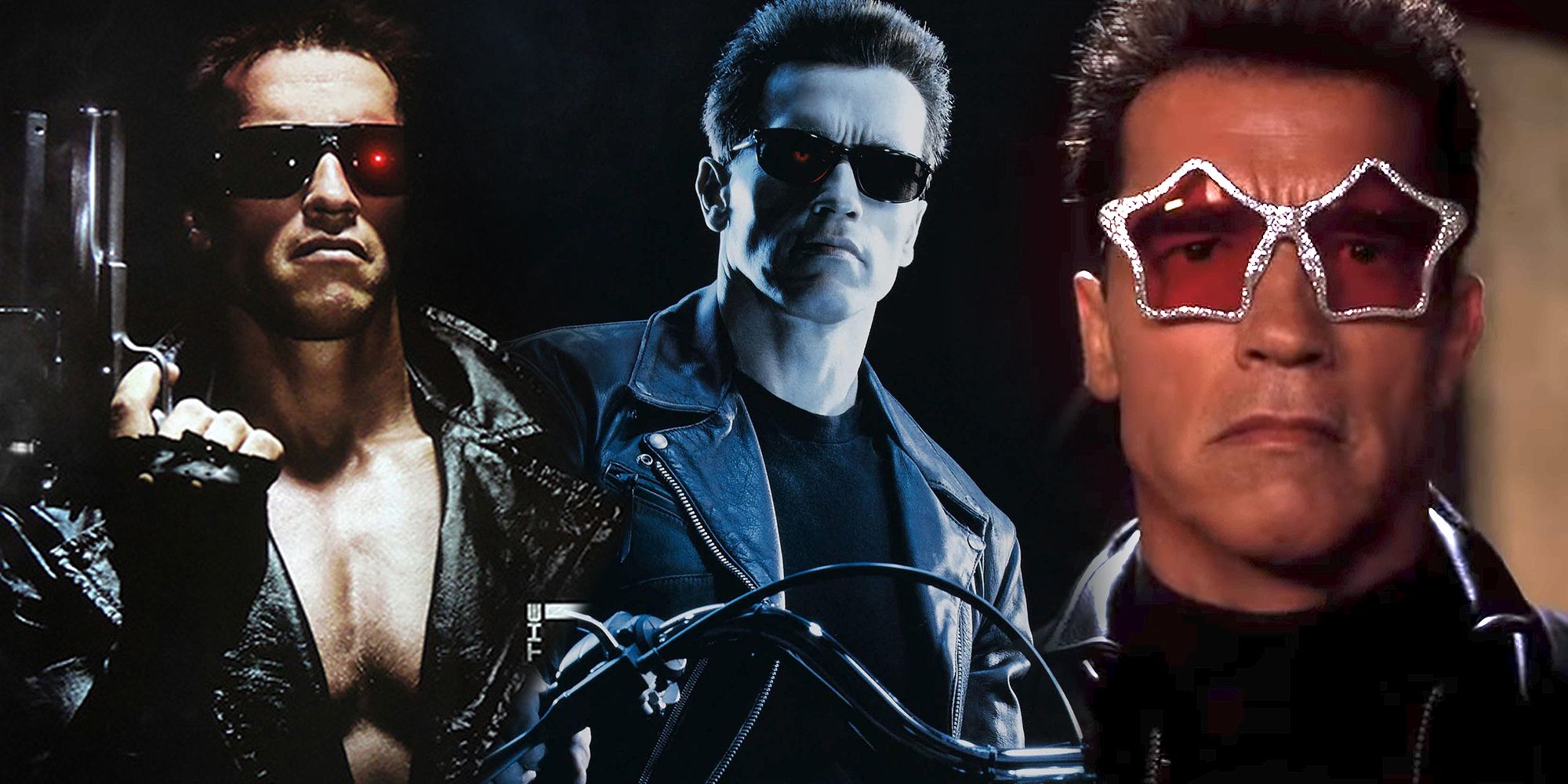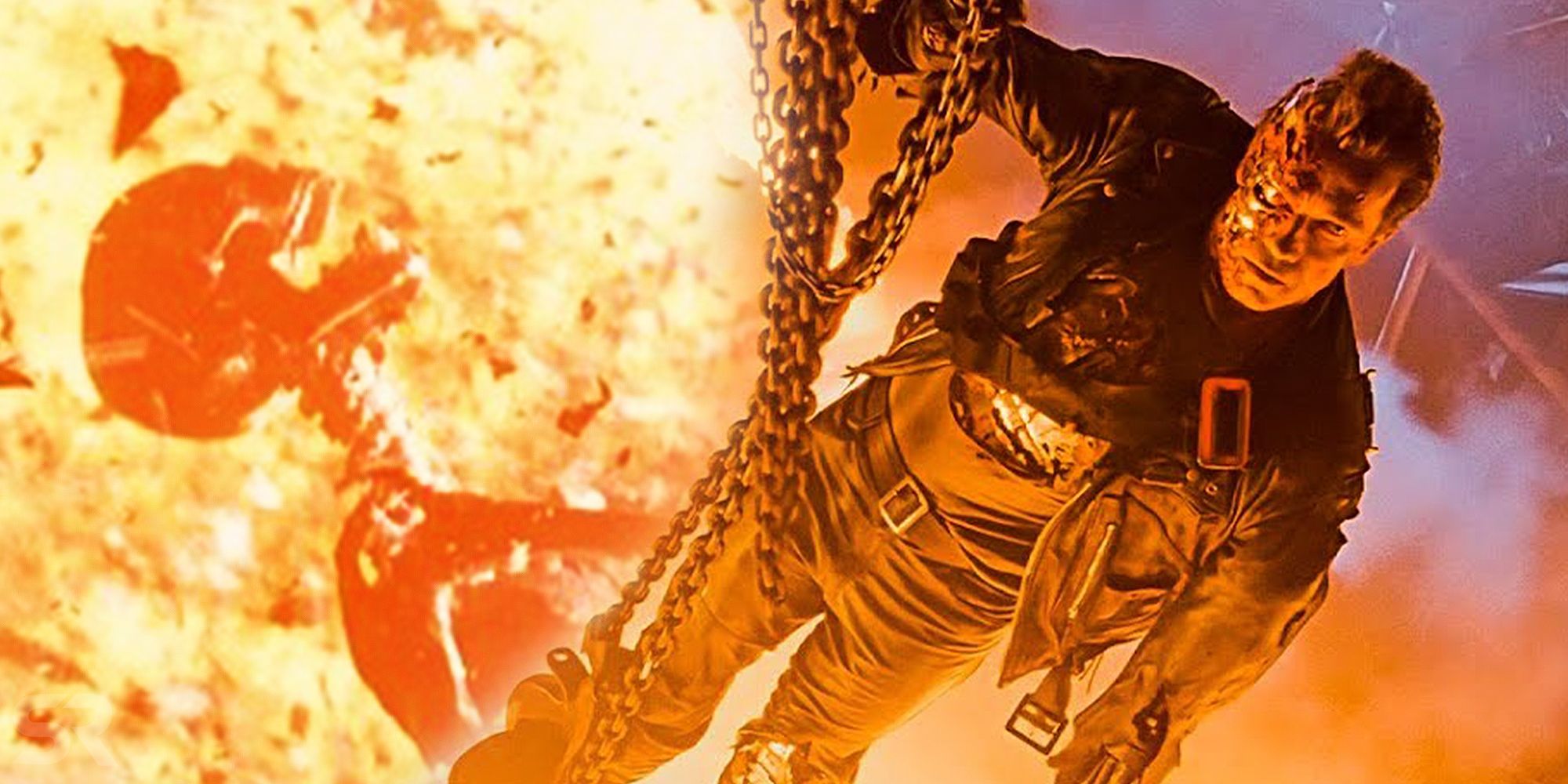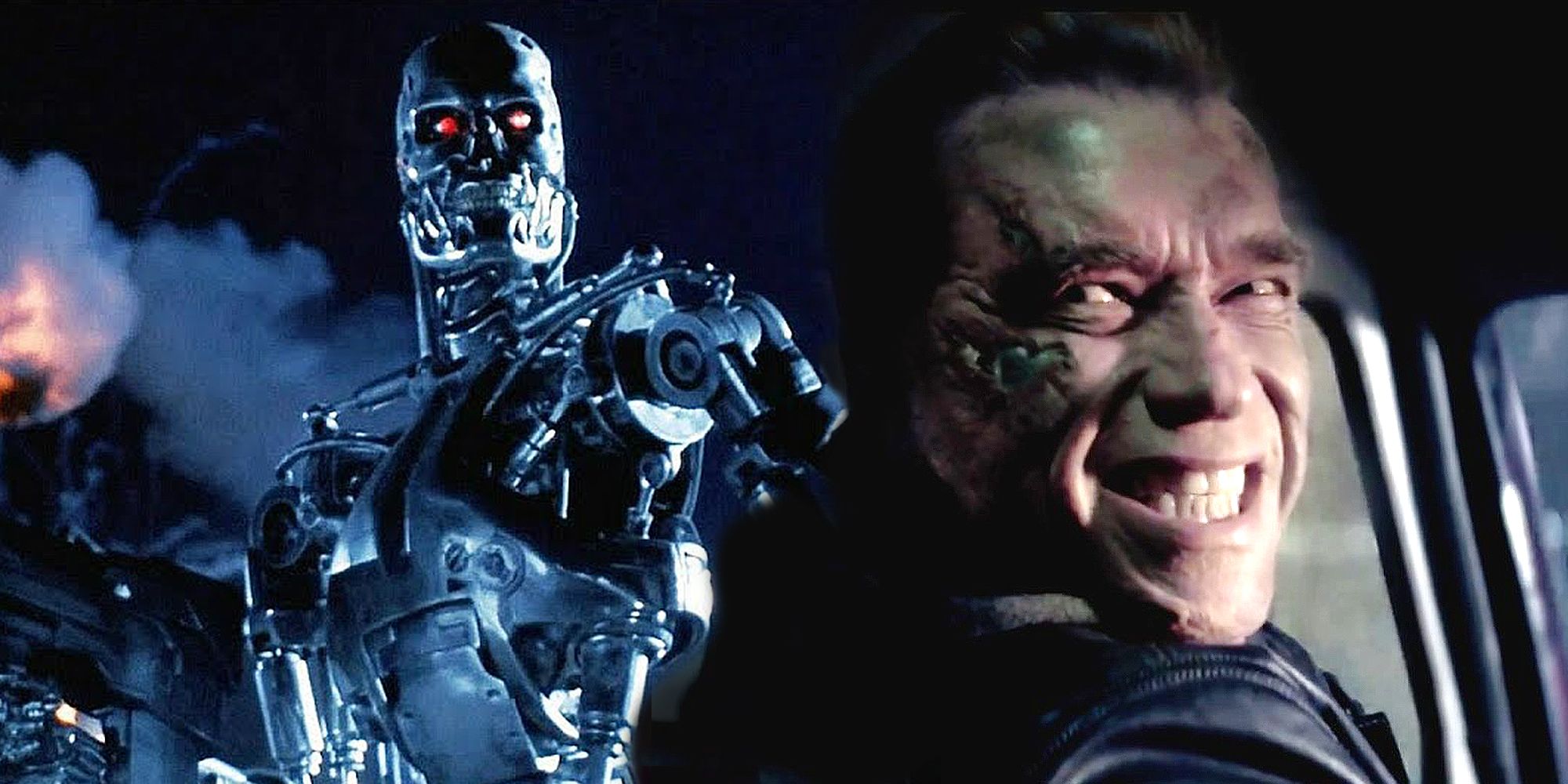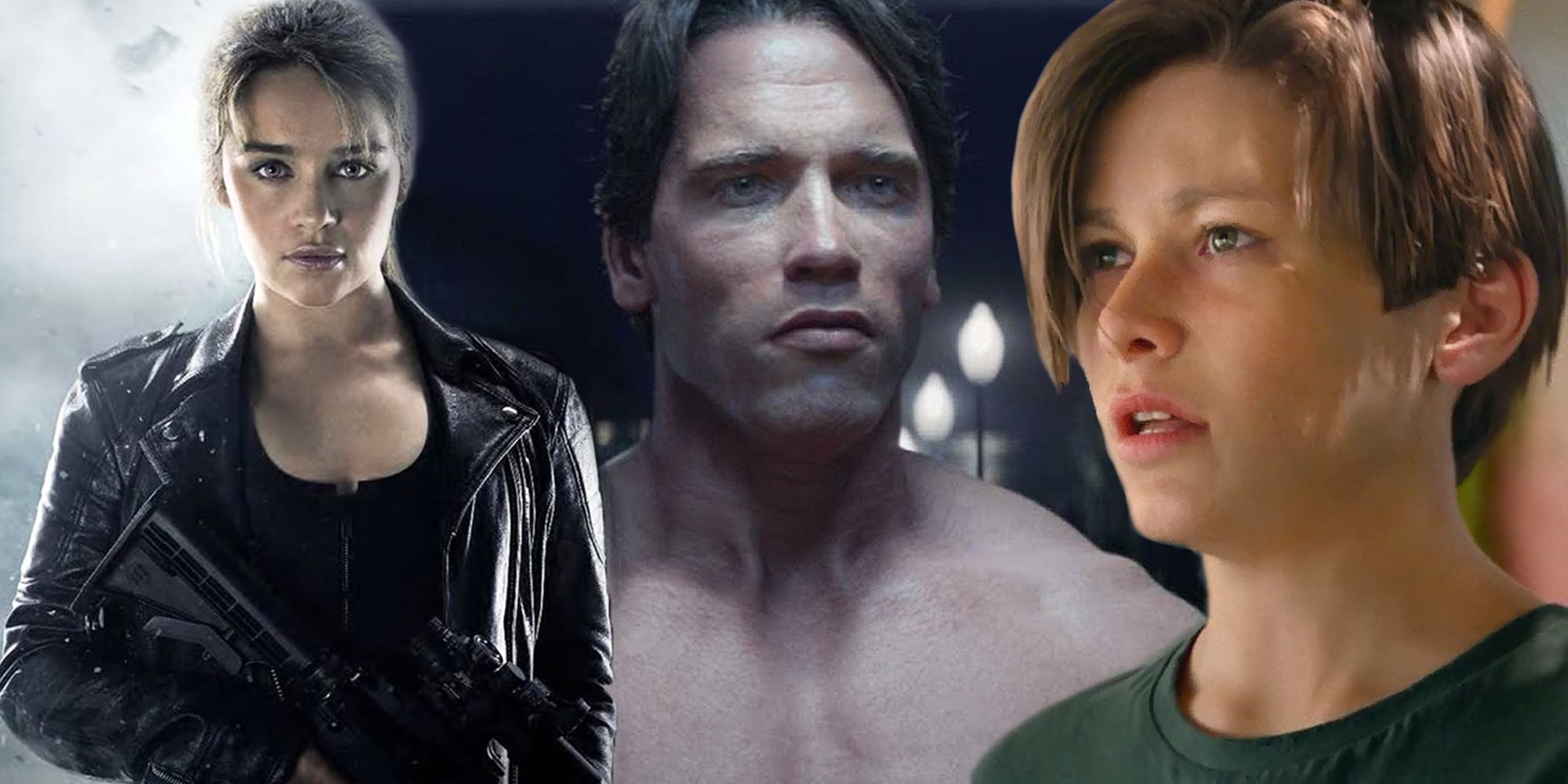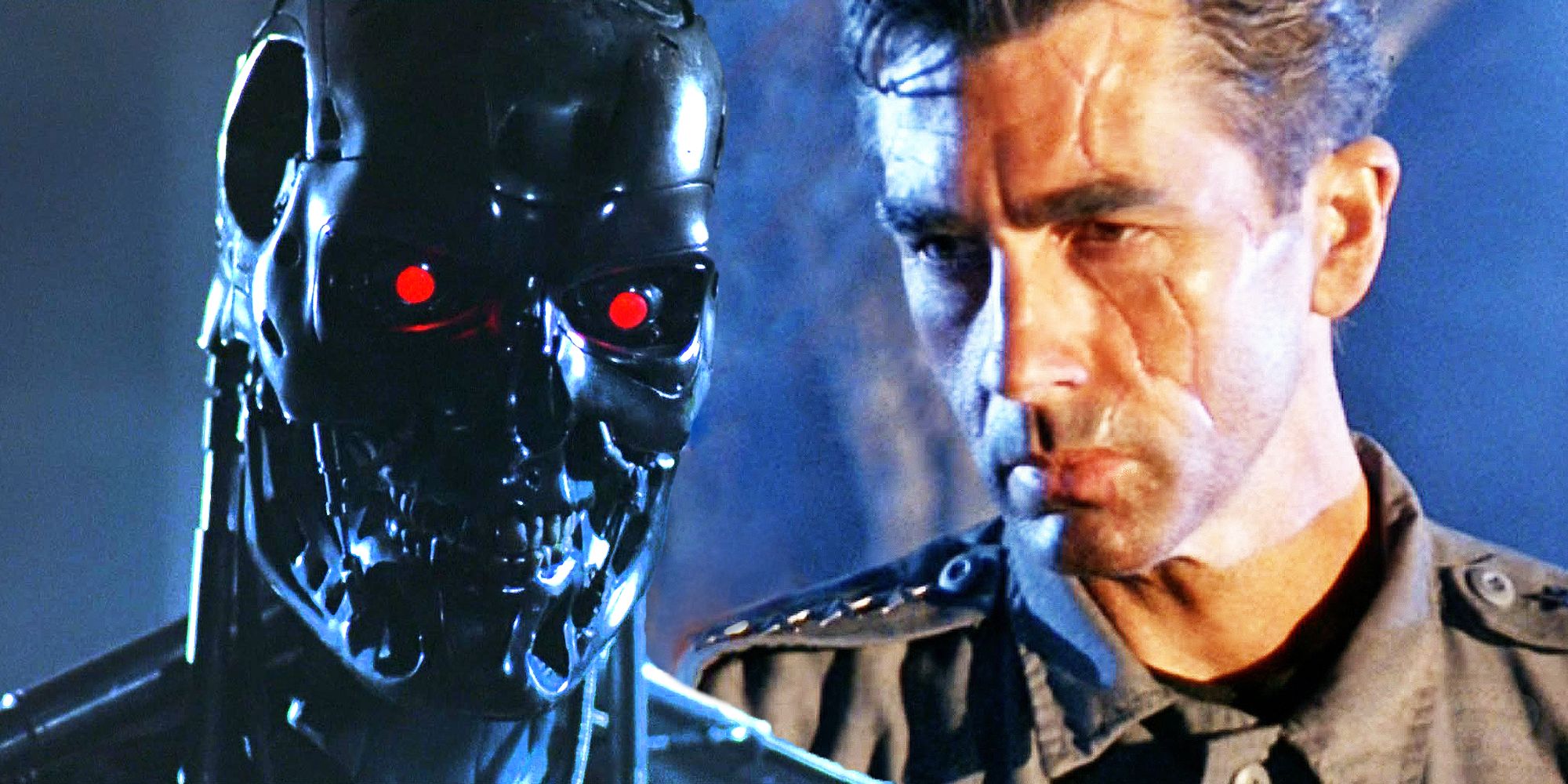Terminator is one of the most popular franchises in film history, but every installment after The Terminator and Terminator 2: Judgment Day has been disappointing in one way or another. James Cameron's 1984 horror/sci-fi The Terminator was his direct ticket to a long and successful career, as well as the gateway to Hollywood stardom for Arnold Schwarzenegger and Linda Hamilton. From its sinister tone to its minimalistic score, 1984's The Terminator struck the perfect balance between horror and science fiction, assembling complex genre elements like time travel and a rogue Artificial Intelligence with the simple yet terrifying threat of an unstoppable killer.
Seven years later, James Cameron finally had enough monetary and technological resources to execute many of the original ideas that had to be cut for the first movie, justifying the first sequel, Terminator 2: Judgment Day. This time, Schwarzenegger's T-800 arrived from the future as a savior figure for the sequel's protagonist, John Connor (Edward Furlong). Not only did T2 cement Arnold Schwarzenegger as an action star with respectable acting abilities, but it also turned Robert Patrick's evil T-1000 into one of the most intimidating movie villains of all time. Judgment Day, now considered the best installment in the franchise, paved the way for an extensive amount of Terminator lore that's still expanding to this very day.
Once Sarah and John Connor triumphed over the T-1000, the cyclical nature of time travel couldn't be altered any further. But money speaks louder than logic. Shortly after the success of Terminator 2, the next big question was how to make Schwarzenegger's killing machine get back into action in order to keep the franchise alive. Cue Terminator 3: Rise of the Machines, which announced the decline of the franchise. Then came Terminator Salvation, which tried to put a grittier spin on the dystopian future. Terminator: Genisys then erased most of what came before with a convoluted web of alternate timelines, and Terminator: Dark Fate became the final nail in the coffin when it tried to introduce a different AI antagonist, only to get the same results. Why have all these sequels failed, then, if fans still love all things Terminator?
Judgment Day's Ending Didn't Leave Room For Another Terminator Sequel
The "perfect" perception that most fans have about Terminator 2: Judgment Day is no exaggeration. T2 crafted a very emotional ending when the T-800 sacrificed himself in a pit of lava in order to ensure that not a single piece of his tech could survive, thus preventing the dreaded Judgment Day from ever happening. This is a logical ending both narratively and emotionally. Narratively, The arrival of the T-X (Kristanna Loken) in Terminator 3: Rise of the Machines can't possibly happen since there's no Skynet to create it. Without Judgment Day, John Connor's (Christian Bale) fight in the Resistance during Terminator Salvation cannot happen either, or at least not as the movie depicts it. And of course, the elaborate mess of Terminator: Genisys and Terminator Dark Fate has no reason to exist, as absolutely nothing related to Skynet can pop up anywhere in the timeline since Sarah and John saw the last piece of the T-800 burn up.
Dramatically speaking, T2 flipped the theme of the inevitability of destiny from The Terminator and gave the heroes a well-deserved victory, turning the feeble Sarah Connor (Linda Hamilton) into a full-fledged action hero while also establishing the fabled John Connor into a real character, not to mention the T-800's transformation from the first movie's villain into the sequel's guardian angel. What seemed to be a death sentence in The Terminator transformed into the conclusion that, as Kyle Reese (Michael Biehn) and Sarah Connor would say, "there's no fate but what we make." In other words, Terminator 2 wrapped up all of its themes as well as it wrapped up its purely narrative elements.
Terminator's Story Isn't As Important (Or Scary) Anymore
The basic concept of The Terminator is rooted in horror — more specifically, what the first movie dubbed "Techno-Noir" in honor of the nightclub where Kyle Reese finds Sarah Connor mere instants before the T-800 almost executes her. In fact, this sequence is the perfect embodiment of what made the first two Terminator movies successful: dark, tense, and terrifying action that doesn't need any paranormal entities to awaken a sense of dread in the audience. As much as they base their concept in sci-fi, their plot is rather a straightforward horror story: unsuspecting characters fleeing away from an unstoppable killer. The connection between the present and the future is solely dependent on the decisions the heroes take in both movies, and this is what makes the main conflict both terrifying and incredibly compelling. Their fate is sealed... maybe. Judgment Day either arrives or it does not.
All of this goes to waste when the following sequels start inventing excuses to keep the threat of Judgment Day alive. Whatever method they choose, the need to break the logic of the first two installments is unavoidable. As logic gets broken, the feelings of fear and mystery are also broken. Granted, this allows the sequels to craft more eye-catching visuals and explore alternative looks at the future, with Terminator Salvation coming the closest to an innovative take on the least explored part of the story: the world after Judgment Day. However, the stakes are completely lost once the sequels establish that anyone can return to affect any part of the timeline. In a universe where anything can be undone, all logic and drama go out the window in exchange for mindless spectacle. This is best represented in how The Terminator's vision of the future, as dated as its special effects are, has more dramatic weight than any of the conveniently arranged plots of the recent sequels.
Terminator Sequels Keep Trying To Retread The Past
As if complicating the future of the franchise wasn't enough, Terminator Genisys and Terminator: Dark Fate also insisted on scrambling its past. Terminator: Genisys based its entire premise on mixing an older T-800—aptly named "Pops"—with a young Sarah Connor (Emilia Clarke) and a young Kyle Reese (Jai Courtney). That sole modification erased the whole existence of all the previous movies. Add an encounter between Pops and the first T-800 in 1984, plus an evil hybrid version of John Connor (Jason Clarke), and Genisys manages to fail at being anything that resembles a coherent movie, let alone an authentic Terminator sequel.
Terminator: Dark Fate committed the same mistake. The most recent offering promised to return to the Terminator's roots with Linda Hamilton's first (and last) reprisal of her role as Sarah Connor after Terminator 2: Judgment Day, as well as a more serious performance by Schwarzenegger. As many fans expected after so many disappointing sequels, Dark Fate once again focused on changing the past and messing up the timeline even further. To make matters worse, Dark Fate did it in the most controversial way possible. The opening sequence shows Schwarzenegger's T-800 murdering a young John Connor in front of his mother shortly after their triumph at the end of Terminator 2: Judgment Day, undermining every single event that came before. From that point forward, Dark Fate once again becomes a completely unrecognizable Terminator sequel with its attempt at introducing another evil A.I. and another hero of the Resistance.
How Terminator 7 Could Work (& Improve The Franchise)
Telling a new Terminator story without involving The Terminator and Terminator 2: Judgment Day is no easy task. Anything that happens within the franchise, whether it explicitly communicates it or not, is inherently tied to time travel. However, there's still one big part of the original story that no sequel has ever touched upon. The original vision of the dystopian future where a seasoned John Connor (Michael Edwards) leads the Resistance is barely displayed in the first two movies, only to be heavily altered after Terminator 3: Rise of the Machines forced the arrival of Judgment Day. Terminator Salvation showed an older John Connor some time before this time frame, but the sequel got too distracted with the concept of hybrid Terminators to fully develop it.
A truly successful Terminator sequel needs to pay attention to the needs of its story rather than on the obligatory focus on spectacular action sequences, nostalgia, Arnold Schwarzenegger, and the audience's expectations. When any new director tries to cram one or more of these elements into a new sequel, the franchise keeps getting redirected toward fan-service or plain and simple cash-grabbing. Instead, when the core of the Terminator's story rises to top priority, a sequel could easily build upon the franchise's already established success, whether that means making a low-budget Kyle Reese spinoff or a full-blown disaster movie about Judgment Day.
While making a good Terminator sequel is difficult, it is not impossible. The 80s-infused chaos of the distant future is yet to be explored, and a full movie based on Kyle Reese's PTSD flashbacks—full of practical effects, underground laser battles, and ominous synthesizers, of course—would probably give the Terminator franchise a much-needed breath of fresh air.

